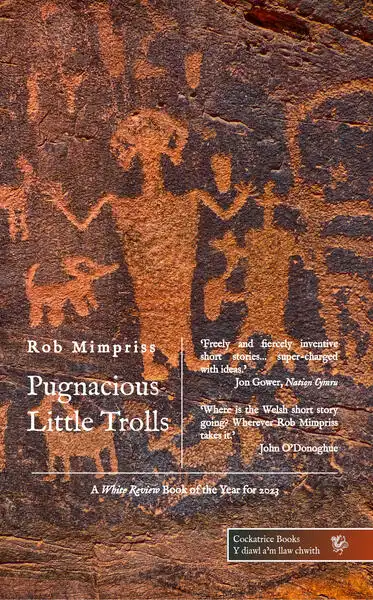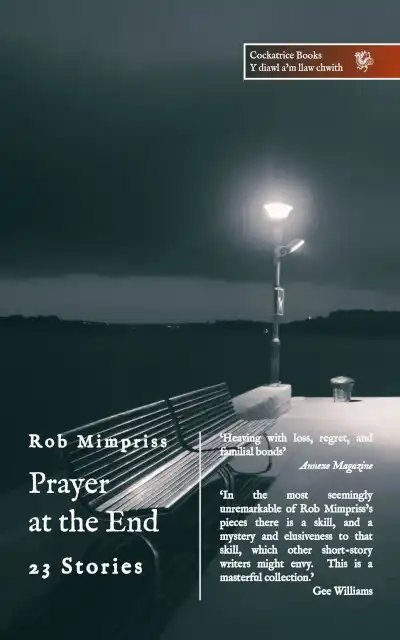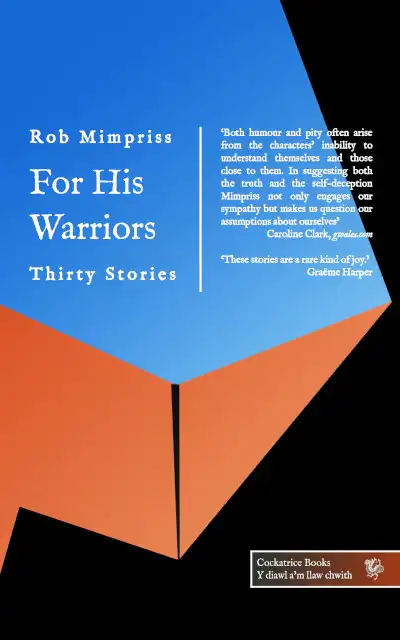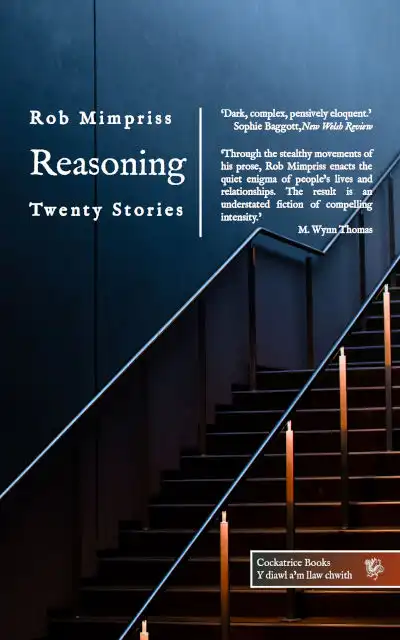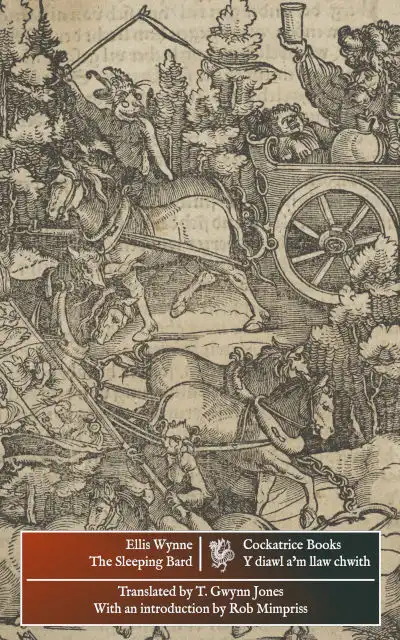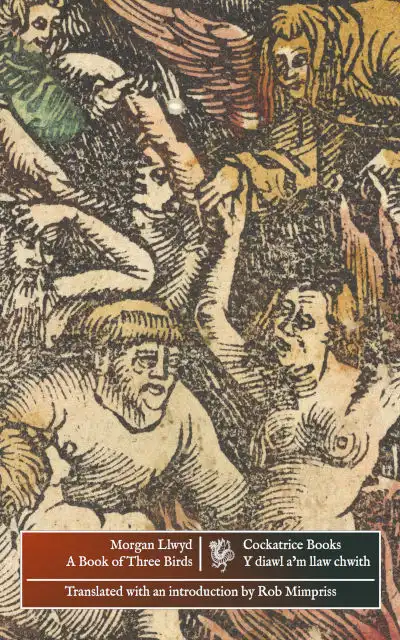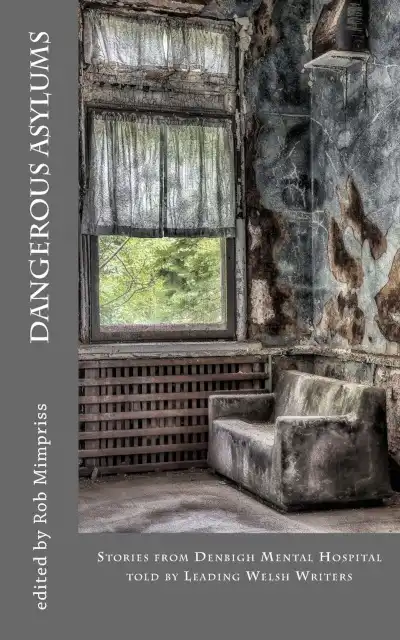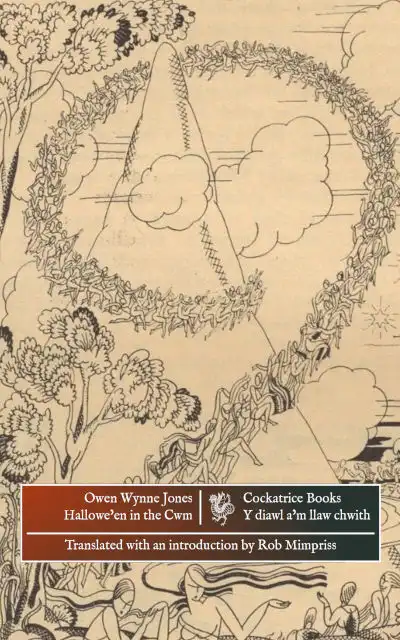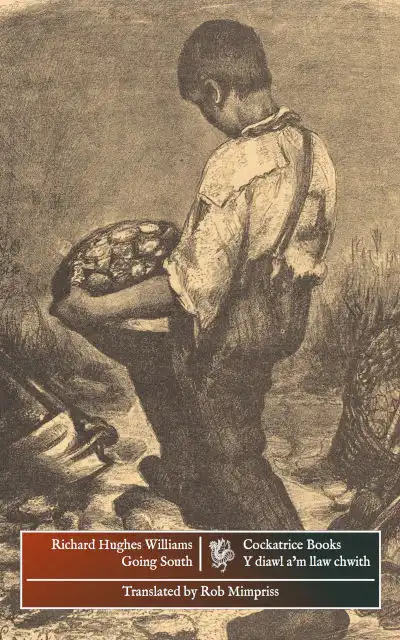The following essay appeared in New Writing: The International Journal for the Practice and Theory of Creative Writing 2:1 (2005), 31-39, DOI: 10.1080/14790720508668942. The version of record is to be found here.
I would like to begin with reference to Sean O’Faolain’s book of criticism, The Short Story (1948). We find him teaching Creative Writing through evening classes in London; we find him complaining of a student’s work which is clichéd and detached from its author’s experience; we find him concluding that what his students need is ‘not instruction in the art of writing but in the art of living.’ Unwilling to write from personal experience which they regard as un-dramatic, as unworthy of fiction, they are forced to rely on repeating the perceptions of authors they have read. It is not, says O’Faolain, that their experience does not exist, but that they do not exist. Since they have no perception of their own, they have no existence of their own.
The argument is familiar now from those who speak disparagingly of ‘workshop fiction’ or ‘the workshop short story.’ It accompanies a conviction that creative writing cannot be taught, and O’Faolain himself speaks slightingly of his achievements as a teacher, insisting that the only student who was later published would have been published anyway without his help, and had only come on the course ‘to pass the time.’ But if the creative writing course can do nothing for the student who is, it seems, unalterably destined to succeed, it can clog the literary marketplace with ‘these irrepressible middle-brow “novelists”’ with high ideals and without originality, who take what they know from their reading and their studies, but never from life itself. Moreover, the problem is not merely one of immaturity or basic lack of originality, since any talented writer can find that his talent deserts him, reducing him to the level of that ‘pseudo-writer’ whom O’Faolain condemns. The writer must prevent this not by avoiding such ‘enemies of promise’ as illness and poverty, but by maintaining his temperament in equilibrium with them, and in doing so forging his ‘literary personality’. Hence Chekhov found his métier in the application of his skills as a doctor to the spiritual lives of his characters; the progress of medicine prompted a belief in progress generally. Guy de Maupassant developed an almost Classical severity of prose and a simplicity of characterisation to present a deeply pessimistic view of human nature, the view of a ‘puritan moralist’.
O’Faolain’s argument about the importance of temperament predicts that of Frank O’Connor, who demands, for a writer to succeed in the short story, a consciousness based on an oppressive sense of the universe as a whole, and on membership of some distinct and disadvantaged community. O’Connor’s argument is weakened by its consistency as he argues that for Chekhov, doctors and teachers were such a ‘submerged population,’ that Mansfield failed in the short story form because she had no ‘submerged population,’ and that Joyce gave up writing short stories because he had lost touch with the ‘submerged population’ of Ireland. To divide writers of the short story so neatly is to arouse suspicion that success in the form depends merely on a knack, and Bernard Bergonzi cites O’Connor in developing such an argument. Despite the ‘professionalism’ of short story writers, their ‘stylistic competence’ and the ‘deft touches’ on which their characterisation relies, the form depends primarily on ‘exactly the right blend of compassionate understanding and clear-eyed detachment’ with which ‘specimens of humanity’ are displayed. Furthermore, short story writers require no original apprehension of life such as O’Faolain and O’Connor demand, for their portrayal of these human specimens may rely less on ‘direct observation or intuition’ than on ‘established literary models.’ If these conventions and the skill they require can be taught, then there is no reason why creative writing courses should not send out such writers by the dozen, though their work will be identified by its critics as typical of the ‘workshop short story.’ One can hope, at most, that some critics will see beyond what is ‘predictable,’ and acknowledge a difference between those whose pessimism is a technique or affectation, and those by whom it is seen and felt. But one is left with Bergonzi’s concluding judgement, that the short story is ‘unhealthily limited, both in the range of literary experience it offers and its capacity to deepen our understanding of the world, or of one another.’
I would like to relate Bergonzi’s arguments to the short fiction of Robert Olmstead and Richard Ford. In his own life Richard Ford is associated with Raymond Carver and Tobias Wolff, alongside whom he is published as a ‘Dirty Realist.’ But though these stories from his first collection, Rock Springs, are concerned with ‘people who watch day-time television, read cheap romances or listen to country and western music,’ with cashiers, ‘unemployed cowboys’ and petty criminals, this defect must lie with the author, not the form, for such characters also appear in his novel, Wildlife. Moreover, his later collection, A Multitude of Sins, is much less concerned with this population, confining the reflections of mature and educated men within the rigours of the short story form. His earlier work also shows a sophistication and a compassion which, according to Bergonzi’s argument, the short story does not require: rather than describing incidents of self-evident pathos as simply as possible, he seems determined, through his character-bound narrators, to interpret and make sense of their suffering. Even when these incidents are as sordid as convention requires, the effect on the reader is softened.
A comparison of two stories by Ford and Robert Olmstead should serve to make these subtleties clear. Ford’s ‘Children,’ from the collection, Rock Springs, and Olmstead’s ‘The Contas Girl,’ published in Granta 19, are both set in an environment of rural isolation and poverty, and are concerned with male friendship, blood sports and casual sex.
The opening paragraph of Olmstead’s story unites these three concerns. In the season between autumn and winter, Harley and Dunfee are in the habit of retiring to the woods where they have a shed, and where they drink beer, talk about sex, and shoot any deer that wander past. They have arranged such a trip before the story begins, but their departure is delayed while Dunfee makes love to ‘the Contas girl,’ the adult daughter of the house where the story is set. Arriving at the house before sunrise, Harley socialises with her father and younger siblings, and is still waiting as the sky darkens before a storm which, we suppose, must delay their departure further. While Harley drinks beer and the children play with matches, he thinks, in the closing sentence, ‘how good it was to be in the Contas girl’s house, watching the tiny flares come from the kids’ mouths, one after the other.’
The opening unites these male characters with their environment; the end stresses their acceptance of it. But it is an environment which is unlikely to appeal to the educated reader, a house filled with broken home and garden equipment and bucket seats torn from old cars, in which the only privacy Dunfee and the Contas girl have as they make love is a curtain through which they can be overheard by the other characters. But these men are defined in terms of their apathy and carelessness. Harley has been facially disfigured since childhood, when he attacked a road flare with a brick. In adult life, Dunfee once fell out of Harley’s truck whilst riding home drunk, but instead of turning back to help him, Harley merely repaired the tailgate to stop it happening again.
What is sordid, incomprehensible, or unacceptable in their environment highlights the characters’ unthinking acceptance of it. The dialogue emphasises this thoughtlessness, moving between the commonplace and incomprehensible, and highlighting further examples of the characters’ wilful failure to better themselves. The old man moves pianos for a living, but work his been slow, and Keiper wants him to cut rowan, but he won’t. He complains of tiredness, and asks Harley for cigarettes and Nyquil, but does not consider why he is tired or has no medicines in the house.
While the characters accept their hardships automatically, the narrator must strive to make what is sordid seem acceptable and familiar. This leads to a noticeable rhythm in the prose, in which interesting or descriptive passages are closed off with staccato rhythms and reductive remarks:
When Dunfee fought, he went into a rage. He’d come flying through the air, all black shoes and red hairy knuckles that were just scabbing over from the last fight. He didn’t fight any more though. He didn’t have to.
Harley and Dunfee talked about becoming guides. It was something neither of them had ever tried. They didn’t like the idea of showing the woods to outsiders.
Harley went away to school and Dunfee worked only when he had to make ends meet. The last few years, though, they did as little as they needed to. They got by.
The old man told the kids to turn on the radio. It was a news station. There was a lot of snow in Montana, a lot more than usual. A man in Texas wanted to raise the Titanic, maybe move it to San Antonio. It sounded to Harley like a good idea.
In the same way that the male characters are identified with their environment, they are only slightly differentiated from each other. Harley is defined in terms of his apathy, and the Contas father in terms of mechanical aptitude, but Harley also shows a willingness to tinker with his truck, and the Contas father is responsible for the squalor and indiscipline which Harley chooses to ignore. Dunfee is defined in terms of his relationship with the Contas girl, who is experienced mainly, in the first part of the story, as an object of his lust. Her leg, Dunfee notices, goes ‘all the way to her ass,’ and is ‘pretty,’ though marred by laundry soap and poison-ivy blisters.
Pathos comes from the portrayal of the Contas girl. During sex she is liable to have ‘pains inside her,’ and this means that Dunfee has to be careful or she will complain or ask him to stop. They first made love in a playing field, and afterwards she bled but did not cry. Afterwards Dunfee swore to himself to marry her, and, we are told, ‘It took him a while to forget the promises he made, but he managed to do so.’ Near the end of the story Dunfee asks, ‘So how’s life?’
Harley smiled. Before he could speak, the girl said, ‘It doesn’t hurt so much any more,’ and then everyone was quiet. No one moved. She looked out the window.
‘Whole days go by and I don’t think about it. I don’t think about him or you or nothing,’ she said.
It seems that this is the moral and emotional climax of the story, for it is the first time that any of the characters has commented so directly on her own state of mind. It is also the perfect revelation of its theme, for the state of unthinking which the girl achieves for a few days at a time, to escape the misery her life has imposed on her, is permanent in all the other characters. Dunfee could get married, Harley could find work as a guide, and the old man could throw out the broken television and give his daughter’s room a more solid and soundproof partition than a drape. If the male characters remain undifferentiated from each other, and if our main source of interest in them is the way they fail to react to their environment, they will seem to us, as Bergonzi calls the characters of short stories, mere ‘specimens of humanity.’ We cannot tell whether the characters’ apathy is a reaction to the squalor that surrounds them, or whether the squalor is a result of their apathy, only that some people live this way, and most of them seem to like it. The ‘blend of compassionate understanding and clear-eyed detachment’ is also there, though it seems that Olmstead is working through a calculated reversal of normal technique, consigning the most articulate and pitiable character to a minor rôle, and highlighting the elements that could be consigned to the background. And at one point the narrative moves beyond the weakness of the characters, supplementing the squalor they have created with an insight of its own. When Harley gets out of the truck and notices a branch he has run over sticking out like an old woman’s arm, there is no need to attribute such an observation to a man so apparently void of imagination. It is one of very few descriptions in the story, and it is an ugly and cruel one.
While ‘The Contas Girl’ emphasises its characters’ failure to rise above or improve their environment, the characters in ‘Children’ are active in their resistance to theirs. Indeed, they have more to rebel against, as victims of physical and sexual abuse as well as of poverty and loneliness. They are also shown to be in competition with each other, and hence more as characters in their own right than as mere ‘specimens of humanity.’ We are brought into closer contact with the material by Ford’s use of a character-bound narrator, but this narrator reflects on the material in retrospect, seeking to add adult understanding to the perceptions of the child.
The setting is introduced first, however, and its isolation emphasised. It is an area which is being depopulated by poverty, and is ‘a lonely place if you are not a wheat farmer’; a year after the events in the story take place, both Claude Phillips and George, the narrator, are gone. Their loneliness, George tells us, perhaps affects ‘the small things that happened’ as much as their youth or their temperaments; but the comment also distances Ford from the techniques used by other writers. It is more factual and simple than the descriptions of Wyoming used by Annie Proulx in Close Range, who wishes both to exalt her characters to heroic status, and to render them irresponsible for their actions in a wilderness too vast for the human mind to comprehend. It also suggests a more complex analysis of character and environment than Olmstead provides, for it is a relationship in which character and environment interpret and shape each other, and in which human behaviour must be understood in terms of a variety of causes.
These characters have already evolved in response to changing circumstances. George has been abandoned by his mother, while his father goes away to work for two days at a time, and Claude’s father, Sherman, has also remarried and taken an additional lover. It is this that explains why George is willing and able to miss school, why Claude is able to insult his step-mother with intelligence and detachment, and willing to describe Sherman’s convictions for violence and drunkenness with humour. It is a friendship of intelligent young men of different temperaments. George is the more passive and accepting of the two, willing to get into Claude’s car without asking where they are going, and to look away while Claude is being physically threatened by Sherman, but also the more philosophical, able to conclude, at the end of the story, that Claude is a fool. Claude is reckless and self-destructive, goading his violent father with the suggestion that the task he has been given, of entertaining for a day the new girlfriend younger than Claude himself, is also an invitation to have sex with her:
‘You’re going to give her to us as a present?’ Claude said.
And Sherman suddenly reached his big hand through the window and caught Claude’s hair in the back and twisted it. Claude’s hair was as short as mine, for boxing, but Sherman had enough of it to hurt. He had a big silver and turquoise ring on his index finger that pushed into Claude’s scalp.
‘You’re not funny. You’re clucks. You’re stupid clucks.’ Sherman forced Claude’s head almost out of the window. He seemed dangerous to me, then – just suddenly. He was an Indian, and I wanted to get out of the car.
Sherman opened the door, pulled Claude out by his hair and away from the car, and put his big face down into Claude’s face and said something I didn’t hear.
The story describes the day spent fishing by George, Claude and Sherman’s girlfriend, Lucy. Lucy is sixteen years old, and has just left her home in Canada and met Sherman outside a bar. The greater intelligence of the characters, and the lack of previous acquaintance between two of the characters and the third, create a far stronger basis for dialogue than exists in Olmstead’s story. There is also the temperamental difference between the two boys, which causes Lucy to use very different kinds of speech when addressing them. For example, Lucy describes to Claude the geese her father cleans and plucks for a living:
‘They smell better than this car does. I wouldn’t have known you two were Indians if it wasn’t for this car. This is a reservation beater is what we call these.’
‘That’s what we call them,’ Claude said. ‘And we call those motels where you were at whorehouses.’
‘What do you call that guy I was with?’ Lucy said.
‘Do you think George looks like an Indian?’ Claude said. ‘I think George is a Sioux, don’t you?’ He smiled at me. ‘George isn’t a goddamn Indian. I am.’
‘An Indian’s a bump in the road to me,’ she said.
Later, while Claude is fishing for whitefish, she tells George how she left home:
‘I just left,’ the girl said. ‘I wanted to take a trip suddenly – to someplace warmer. I’m not sure I had this in mind, though… His father’s not so terrible,’ she said and touched her nylon stockings, which were in a pile on the grass. She lifted one up with her little finger. ‘You certainly wouldn’t think he’d sit in the dark in the middle of the night and pray in a motel. But he does. He’s nice, really. He’s pretty big, too. His son’s scrawny.’
pink;;
But this is not the full story:
‘Well,’ she said, ‘you’ll never see me after today, either. What have you done that’s shameful?’
‘Nothing,’ I said. ‘I haven’t done anything shameful.’
‘Lying it is, then,’ she said. ‘That’s shameful. You lied because you’re ashamed. There isn’t any out of this. It’s a game, and you lost it.’
‘You’re not ashamed of anything, are you?’
‘Yes I am,’ she said. ‘I’m ashamed of leaving home without saying anything to anybody. And of spending the night with Sherman at that motel. That’s just two days of things. I’ll give you a second chance. Are you ashamed of being out here with me – whatever kind of person I am? That’s easy, isn’t it?’
The relationships between the three characters are fuelled by hatred and shame, as Claude makes Lucy a target for the abuse he cannot direct at Sherman, using her to cuckold and avenge himself on his father, and as Lucy seeks sexual encounters, first with George, then with Claude, to dilute the shame and anguish she feels. She is happy to strip naked in front of both boys, to prove Claude’s accusation than she would ‘do anything,’ even ‘fuck a pig in knickers’, and to show that to her, George, Claude and Sherman are all alike, as far beneath her attention and respect as her own scratched body is. At the end of the story, she accepts the hush-money that Sherman has given the boys, going not back to him, but onwards to the bus station at Great Falls, and into her lonely and uncertain future.
The difference between ‘The Contas Girl’ and ‘Children’ lies in their characterisation and tone. We have seen that Ford’s characters, with their differing temperaments and complex motives, offer more interest to the reader than the relatively simple and undifferentiated figures in ‘The Contas Girl,’ and that Ford’s character-bound narration is more intimate and tender than Olmstead’s detached examination of Harley’s and Dunfee’s experience. In Olmstead’s story also we are strangers to the only character who expresses pain. Focussing on the Contas girl’s outburst and Harley’s indifference, we conclude that she seeks as an anodyne the spiritual and intellectual oblivion which, in those around her, causes her suffering, and this does seem to be an adequate interpretation of the story. In George’s attempts to understand what has happened to him, we encounter something more problematic. At the age of seventeen he is conscious of what is going on around him, able to conclude that Lucy is ‘someone who could be by herself in the world’ in a way that he and Claude will never achieve, that Claude is a fool because he ‘didn’t know what mattered to him in the long run,’ and that he himself has only ever thought about himself, and that this will make him ‘bitter and lonesome and useless.’ There is an expectation of unhappiness here that his older self does nothing to contradict, and any attempt he is making to reinterpret his childhood experience in the light of adulthood seems to be largely fruitless. They were simply young, he concludes at the end, and when you are older, nothing you did when you were young matters at all.
Perhaps Bergonzi’s comments on the short story are adequate as an account of ‘The Contas Girl,’ and perhaps Olmstead’s style and material could be imitated by writers with a lesser understanding of poverty. But as an account of ‘Children’ Bergonzi’s comments do seem inadequate, for they make no prediction of the complexity of the characterisation or the sorrowful ambivalence of the tone. We might also feel the presence of Ford’s ‘literary personality,’ a complex and shadowed mind fully alert to loneliness and regret.
Bergonzi’s comments on the short story form are a response to O’Connor’s concept of the ‘submerged population,’ and an assertion that pathos and alienation alone cannot form the basis of a rich and flexible art form. But he ignores the other part of O’Connor’s argument, that the short story is concerned with the individual’s response not to human society, but to the universe as a whole. Such a response will normally arise from solitude, for the demands and attractions of human society will prevent us from developing this cosmic vision. For this reason, loneliness and isolation are likely to form the staple themes of the short story, but this is not to say that they will limit its end.
We are left to question the rôle of the academy in the formation of the short story. Discussing its history in America, Andrew Levy sees the short story as both protected and limited by the creative writing course: reliant upon it for patronage since it is unable to flourish in the commercial publishing world, affected (or so he implies) by too ready a link between graduation and publication.
If the short story is concerned with loneliness or the mystic vision, it also seems unlikely that the creative writing workshop will serve it well. The workshop group with which I studied for my MA would have been hard put to describe itself as a submerged population. We had been selected by a relatively prestigious university after inspection of our portfolios and our pockets. We were graduates, and had now received this second boost to our egos. We discussed and exchanged our manuscripts freely, and met talent scouts from prestigious publishing houses. In retrospect it seems unlikely that we were quite what O’Connor had in mind.
In creative writing courses in Britain I suspect that the form is taught and assessed more for practical convenience than out of any sympathy with its spirit. If tutors share critical assumptions about the short story they are unlikely to be effective teachers of it, and if they share publishers’ concerns they may encourage their students to see the form as an entrée for the novel only. Although the short story will doubtless remain prominent on creative writing courses, it may be weakened, not strengthened, as a result.




